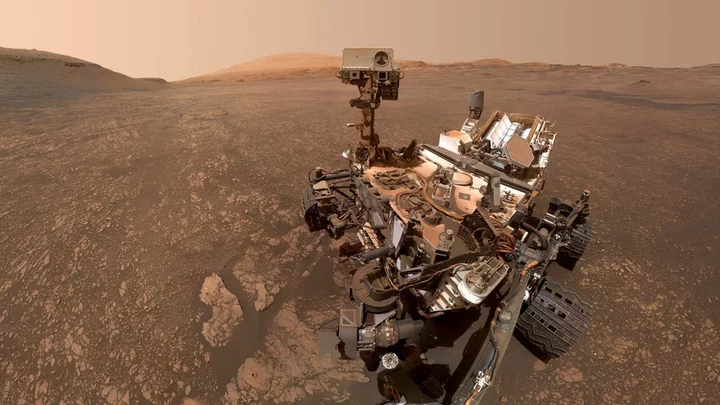It was a long slog. But NASA's Curiosity rover did it.
The space agency's car-sized robot, which has ventured up Mars' Mount Sharp for nearly a decade, successfully traversed rocky terrain to arrive at a scientifically-intriguing site made by ancient avalanches of boulders, debris, and water. Today, this place, Gediz Vallis Ridge, exists as a prominent hill blanketed with large rocks.
After making the arduous trek (scientists worked to find a passable route to this area for three years), the Curiosity rover turned around and snapped an expansive image of the Martian landscape beyond, which NASA released on Oct. 5.
"If your path ahead is rocky, I feel you. We got this," the agency posted on X (formerly Twitter).
SEE ALSO: NASA's rover photo shows water once absolutely gushed on MarsThere's lots to see in this Mars vista:
- There are mountains in the far distance: Those make up the rim of Gale Crater, the giant impact basin containing Mount Sharp.
- In the foreground you can see the particularly uneven, rocky terrain the rover rumbled over to reach the ridge.
- To the right is part of Kukenán Butte, a feature reaching some 500 feet high.
- The cylindrical part of the rover, seen on right, is the robot's ultra-high frequency (UHF) antenna. It's used to relay messages and data to NASA's Mars-orbiting satellites.
The Curiosity rover's view from Mount Sharp, near Gediz Vallis Ridge. Credit: NASAWant more science and tech news delivered straight to your inbox? Sign up for Mashable's Light Speed newsletter today.
Rumbling to this region on Mount Sharp was trying. "The path up the mountain over the last several months required the most arduous climb Curiosity has ever made," NASA explained
"If you’ve ever tried running up a sand dune on a beach – and that’s essentially what we were doing – you know it’s hard, but there were boulders in there as well," Amy Hale, a member of NASA's Curiosity team, said in a statement.
Together with the agency's Perseverance rover and other Martian missions, robots on the Red Planet are revealing Mars' ancient history, and whether it may have harbored special conditions suitable for surface life to evolve and flourish. It's clear that Mars, some 3 billion years ago, was a world teeming with water, expansive lakes, and roaring rivers. Whether life ever arose there is an ongoing question.









